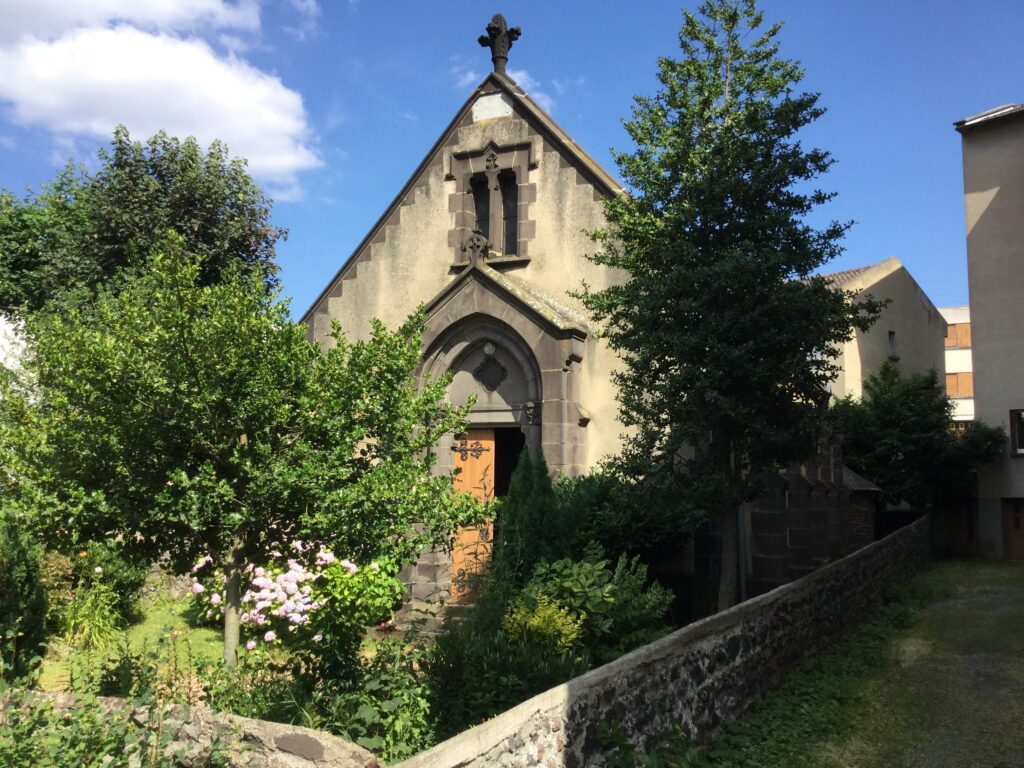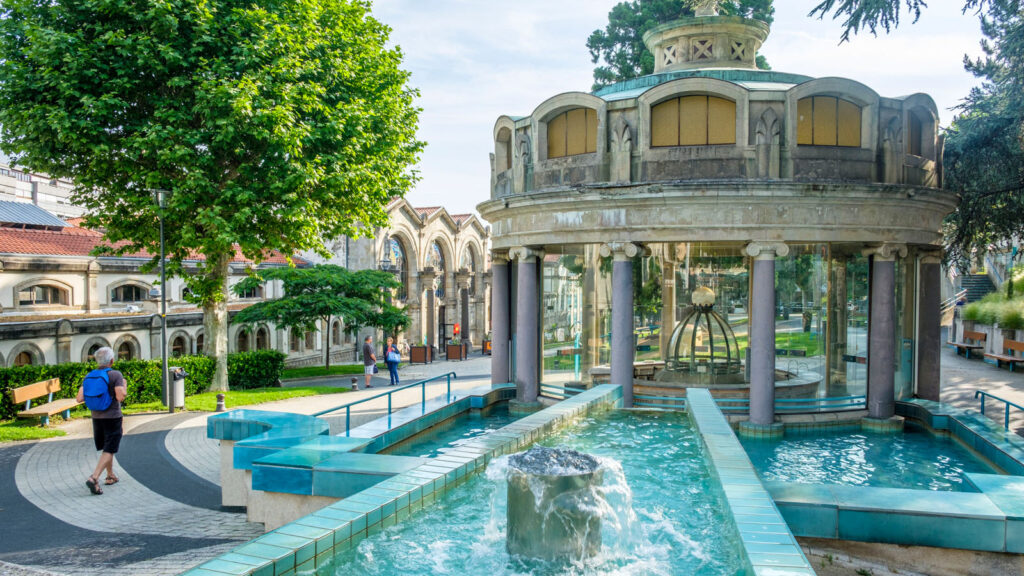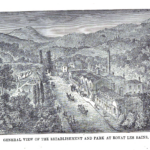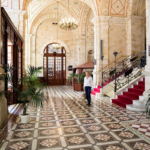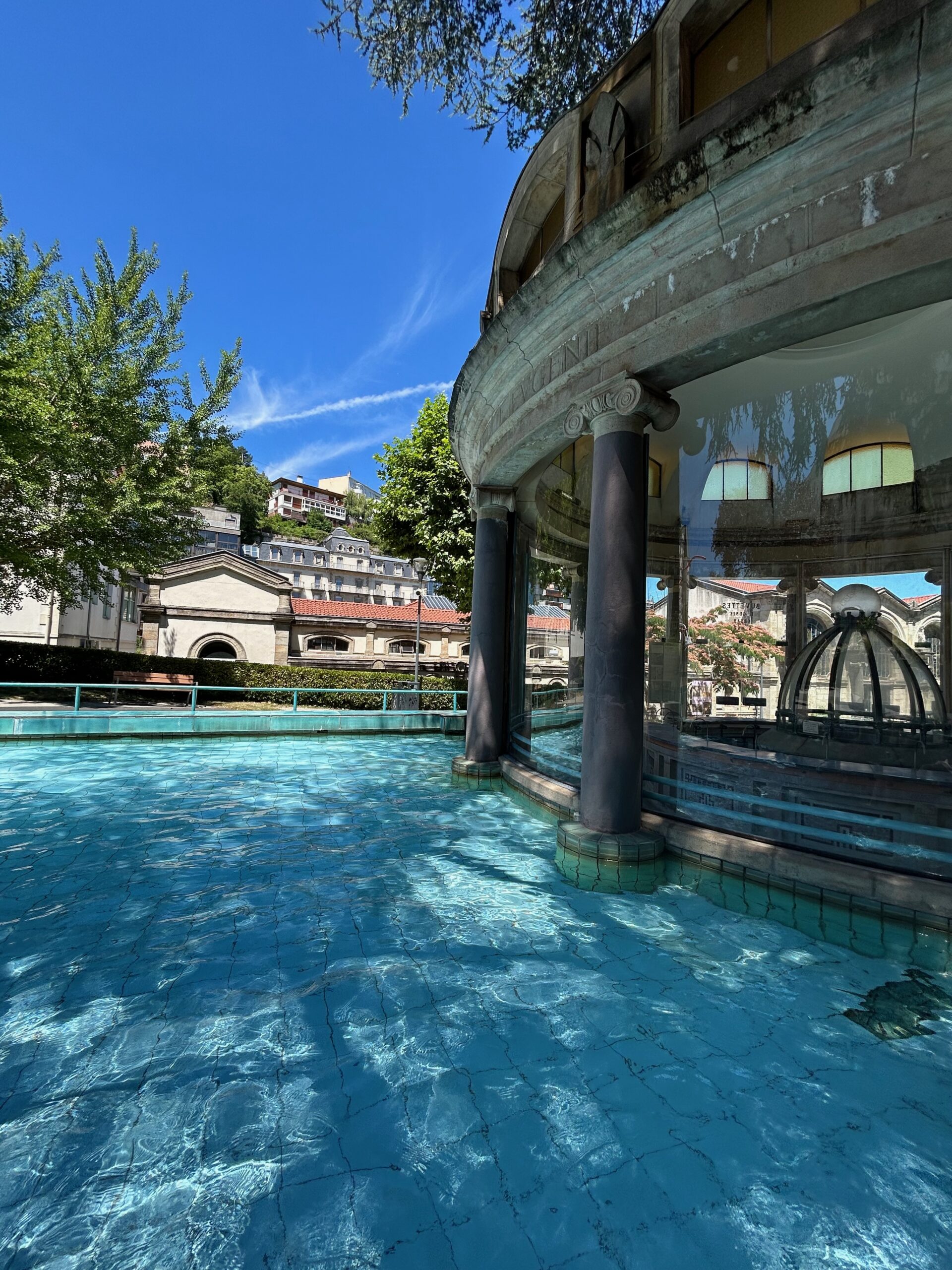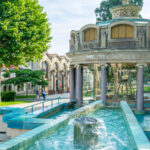Once the playground of emperors and queens, Royat remains one of the most beautiful and architecturally-appealing towns in Auvergne. To a certain extent, its beginnings mirror that of the boomtowns of the American West. But gold wasn’t what sent the international beau monde stampeding to Royat — water was.
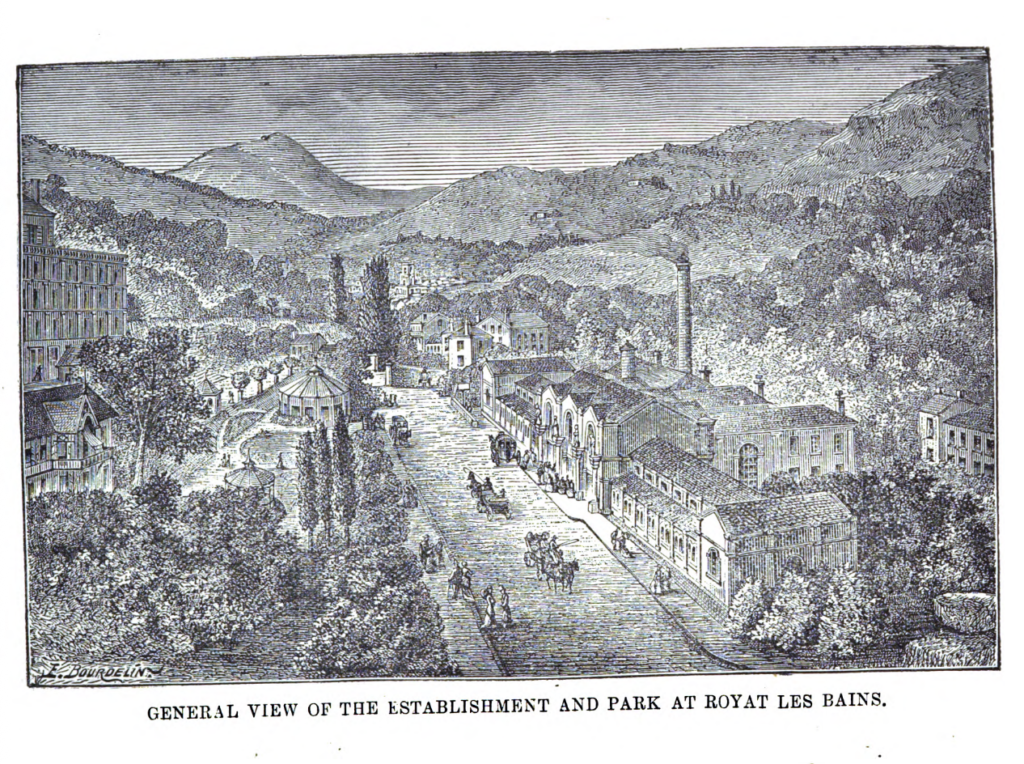
After several thermal springs were discovered there in the 1800s, the press went wild. Royat and its curative waters became the hot new destination. In town, hotels and mansions sprouted up like trees, and opera houses and ballrooms — glamorously constructed to reflect genteel tastes of the day — rose up in dazzling glory like the magic castles of legend. Royat’s destiny was thus forged in a matter of decades, and it is the history of this remarkable transformation as well as its reverberations into the present that serve as a primary inspiration for local historian Johan Picot.

“Royat has been and still is the place to be,” he told me as we chatted in the gardens of Hotel Royal Saint Mart. Long fascinated by the legacy of the Belle Époque era in Auvergne, Picot is a historian and the author of the newly released book, La Source Eugénie: Cœur de la station de Royat-les-Bains (2025). Picot’s book explores and explains how the 1843 discovery of Royat’s most famous thermal spring fuelled a kind of localised cultural renaissance, which ultimately established Royat as one of Europe’s most popular resorts.
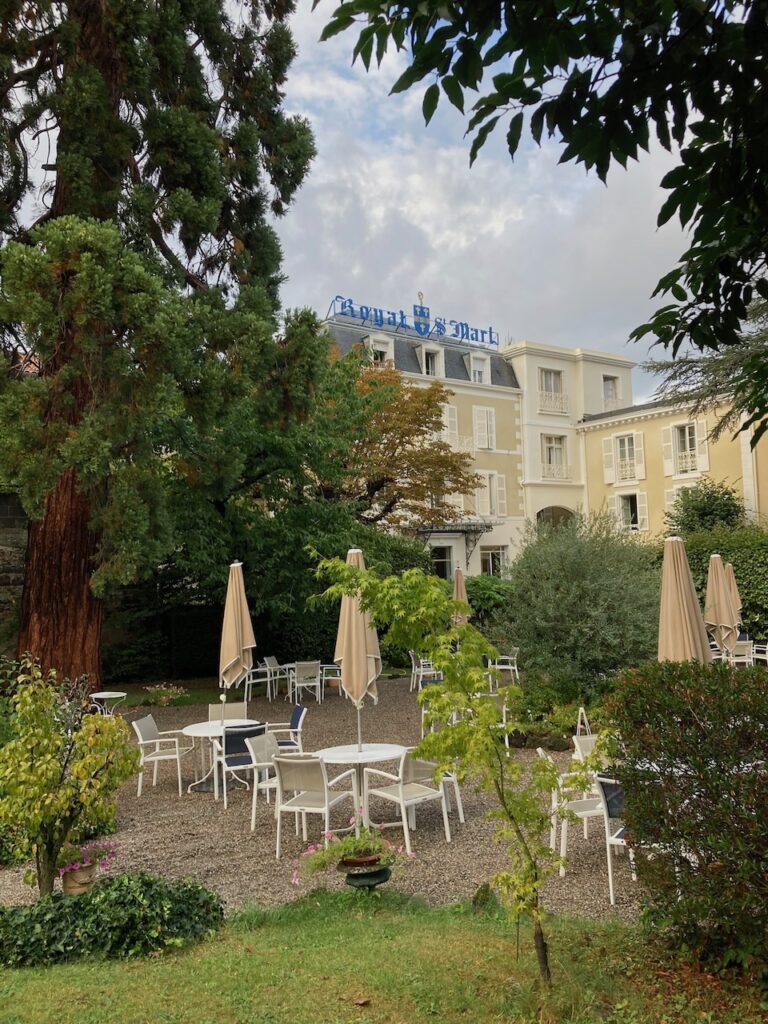
Professionally trained as a medieval historian, Picot has literally carved out his own career path, moving between such diverse pursuits as archaeology, real estate, and teaching. In childhood one of his key inspirations was Indiana Jones. A survey of his current interests and activities shows that this early influence still serves as a motivating factor. Since founding the historical consultancy Arca Communis in 2019, Picot has been involved in a raft of cultural heritage and preservation projects across Auvergne.
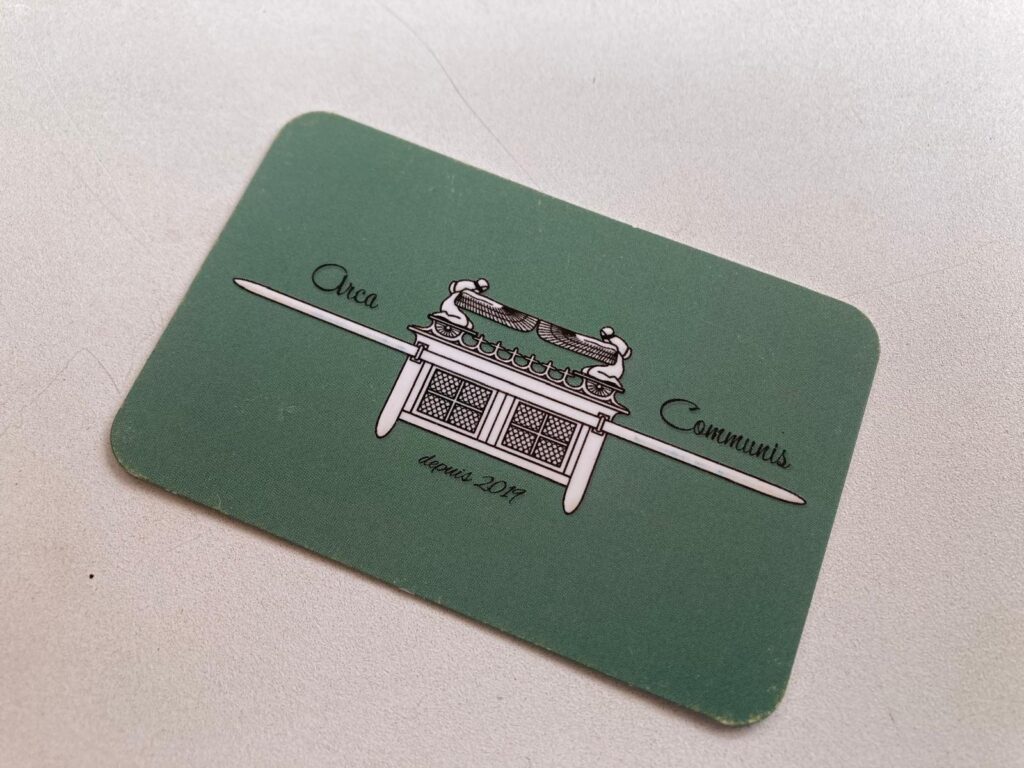
His transition towards public history initially began in 2017 when he moved into an apartment at the historic Grand Hôtel and Majestic Palace. He quickly took an interest in the building’s archives, and eventually worked to secure the site a “protected” designation. According to Picot, much of Royat’s early popularity can be tied to the Napoleon III, Emperor of France. “Long before social media, he was the first influencer,” said Picot. “In the 1860s, Royat welcomed the emperor and his wife, Empress Eugénie. He named the main spring after her. Then he went on to promote the town through photography. Of course other aristocrats and wealthy bourgeois families took notice.”
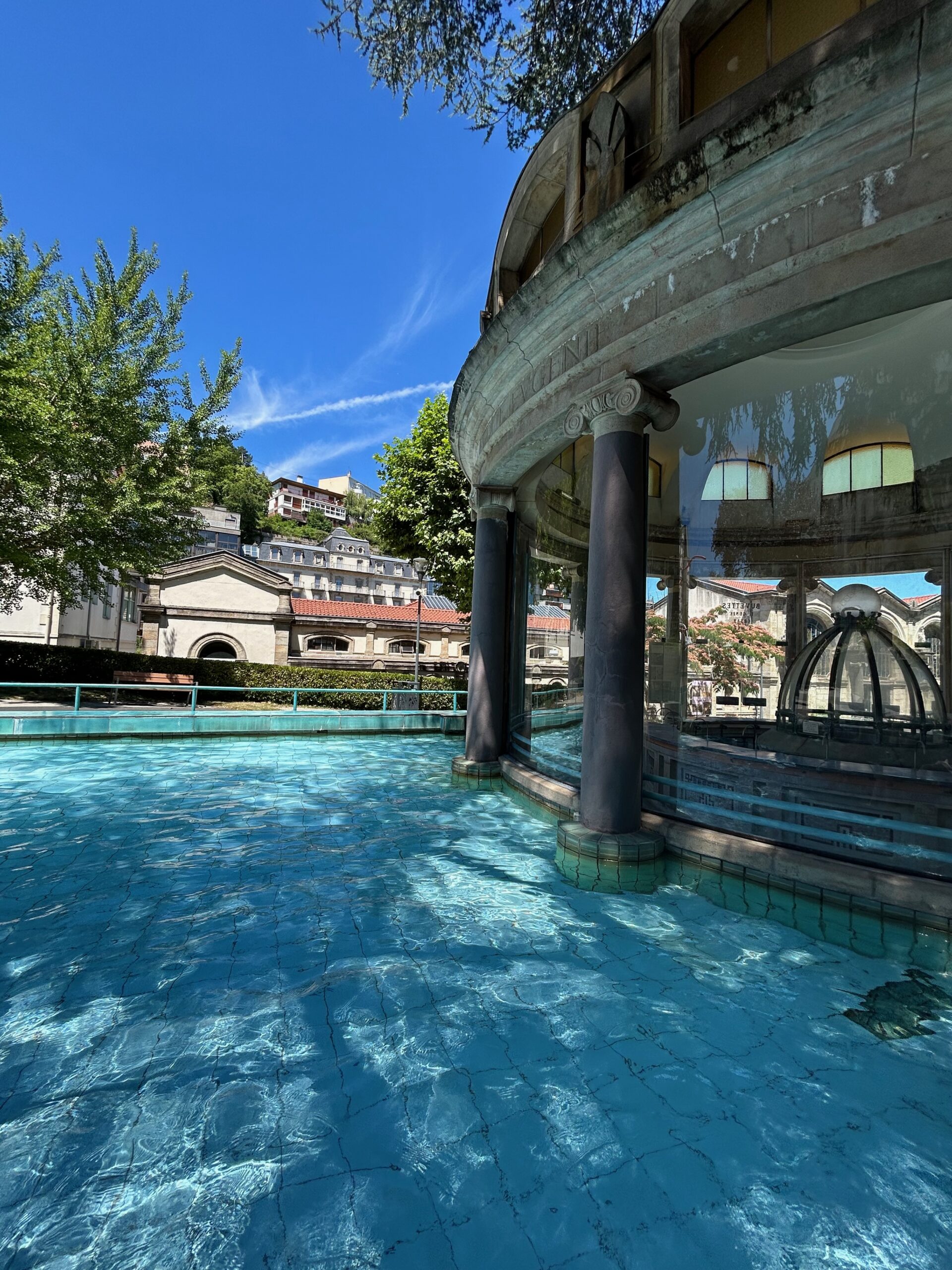
The sudden influx of wealth literally shaped Royat’s aesthetics. “Architects like Louis Jarrier and Agis-Léon Ledru catered to these upper classes appetites,” Picot explained. “When you walk around Royat, you’ll find lots of Néo-Grec and Neoclassical motifs. Bright colours, stained glass. There was a desire to reflect the paradisal nature of these spaces and the elegance of their patrons.”

Although there’s much to see in the centre of town, Picot recommends that visitors also try to catch a glimpse of Christ Church — a Neo-gothic church originally constructed by the local Protestant community in the early 1900s. Another attraction which shouldn’t be overlooked is the fortified church of Saint Léger. There’s a lot to see here — so much history,” Picot added. “My future book will reveal much more of this heritage.”
